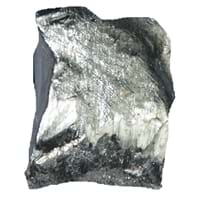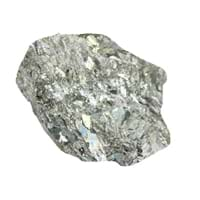Terbium vs Palladium
Periodic Table
Symbol
Tb
Pd
Group Number
Not Available
10
8
Period Number
6
5
Block
f block
d block
Element Family
Lanthanide
Transition Metal
CAS Number
7440279
99+
7440053
99+
Space Group Name
P63/mmc
Fm_ 3m
Space Group Number
194.00
5
225.00
2
Facts
Interesting Facts
- At times Terbium metal acts same as Calcium.
- Terbium metal closely similar to Lanthanum metal.
- Palladium alloys are used for Jewelry contains (95% Palladium and 5% Ruthenium)
- In the late 1800s, Palladium metal used have more economical value than the Platinum metal.
- Palladium element is known as a good catalyst
Sources
Found in Minerals, Found with Other Rare Earth Metals, Mining, Ores of Minerals
Ores of metals
History
Who Discovered
Carl Gustaf Mosander
William Hyde Wollaston
Discovery
In 1842
In 1803
Abundance
Abundance In Universe
5 * 10-8 %
27
2 * 10-7 %
22
Abundance In Sun
~0.00000001 %
29
~0.0000003 %
24
Abundance In Meteorites
0.00 %
99+
0.00 %
99+
Abundance In Earth's Crust
0.00 %
40
0.00 %
99+
Abundance In Oceans
0.00 %
99+
Not Available
Uses
Uses & Benefits
- Terbium salts are used in optical devices like laser devices.
- Terbium’s alloy lengthens and shortens the magnetic field and this effect forms loudspeaker.
- Mostly palladium metal is used in catalytic converters. In electronic industry it is used in ceramic capacitors of mobile and computer.
- It is used in jewellery and dental fillings and crowns.
Industrial Uses
Electronic Industry
Aerospace Industry, Automobile Industry, Electronic Industry
Medical Uses
NA
Dentistry, Pharmaceutical Industry, Surgical Instruments Manufacturing
Other Uses
Alloys
Coinage, Bullion, Jewellery
Biological Properties
Toxicity
Low Toxic
Toxic
Present in Human Body
No
No
Physical Properties
Melting Point
1,356.00 °C
33
1,554.90 °C
22
Boiling Point
3,123.00 °C
29
2,963.00 °C
33
Appearance
Physical State
Solid
Solid
Color
Silvery White
Silver
Luster
Metallic
Metallic
Hardness
Mohs Hardness
Not Available
4.75
9
Brinell Hardness
677.00 MPa
17
320.00 MPa
33
Vickers Hardness
863.00 MPa
13
121.00 MPa
36
Speed of Sound
2,620.00 m/s
35
3,070.00 m/s
26
Optical Properties
Refractive Index
Not Available
1.72
1
Reflectivity
Not Available
84.00 %
4
Allotropes
No
No
α Allotropes
Not Available
Not Available
β Allotropes
Not Available
Not Available
γ Allotropes
Not Available
Not Available
Chemical Properties
Chemical Formula
Tb
Pd
Isotopes
Known Isotopes
26
13
38
1
Electronegativity
Pauling Electronegativity
Not Available
2.20
4
Allred Rochow Electronegativity
1.10
30
1.35
21
Allen Electronegativity
Not Available
1.59
22
Electropositivity
Pauling Electropositivity
Not Available
1.80
99+
Ionization Energies
1st Energy Level
603.40 kJ/mol
99+
520.23 kJ/mol
99+
2nd Energy Level
1,174.80 kJ/mol
99+
7,298.22 kJ/mol
2
3rd Energy Level
2,417.00 kJ/mol
99+
11,815.13 kJ/mol
3
4th Energy Level
4,203.00 kJ/mol
31
Not Available
Electrochemical Equivalent
1.98 g/amp-hr
31
1.99 g/amp-hr
30
Electron Work Function
3.00 eV
36
5.12 eV
3
Other Chemical Properties
Ionization, Radioactive Isotopes, Solubility
Chemical Stability, Corrosion, Ionization, Solubility
Atomic Properties
Atomic Number
65
99+
46
99+
Electron Configuration
[Xe] 4f9 6s2
[Kr] 4d10
Crystal Structure
Hexagonal Close Packed (HCP)
Face Centered Cubic (FCC)
Crystal Lattice
HCP-Crystal-Structure-of-Terbium.jpg#100
FCC-Crystal-Structure-of-Palladium.jpg#100
Atom
Number of Protons
65
99+
46
99+
Number of Neutrons
94
36
60
99+
Number of Electrons
65
99+
46
99+
Radius of an Atom
Atomic Radius
177.00 pm
17
137.00 pm
40
Covalent Radius
194.00 pm
16
139.00 pm
99+
Van der Waals Radius
221.00 pm
22
163.00 pm
40
Atomic Weight
158.93 amu
99+
106.42 amu
99+
Atomic Volume
19.20 cm3/mol
22
8.90 cm3/mol
99+
Adjacent Atomic Numbers
Valence Electron Potential
46.80 (-eV)
33
33.00 (-eV)
99+
Lattice Constant
360.10 pm
36
389.07 pm
25
Lattice Angles
π/2, π/2, 2 π/3
π/2, π/2, π/2
Lattice C/A Ratio
1.58
13
Not Available
Mechanical Properties
Density
Density At Room Temperature
8.23 g/cm3
99+
12.02 g/cm3
29
Density When Liquid (at m.p.)
7.65 g/cm3
30
10.38 g/cm3
17
Tensile Strength
60.00 MPa
17
Not Available
Viscosity
Not Available
Not Available
Vapor Pressure
Vapor Pressure at 1000 K
0.00 (Pa)
29
0.00 (Pa)
27
Vapor Pressure at 2000 K
12.50 (Pa)
8
0.00 (Pa)
30
Elasticity properties
Shear Modulus
22.10 GPa
32
44.00 GPa
17
Bulk Modulus
38.70 GPa
33
180.00 GPa
9
Young's Modulus
55.70 GPa
34
121.00 GPa
16
Poisson Ratio
0.26
21
0.39
5
Other Mechanical Properties
Ductile, Malleable
Ductile, Malleable, Weldable
Magnetic Properties
Magnetic Characteristics
Specific Gravity
8.23
39
12.02
21
Magnetic Ordering
Paramagnetic
Diamagnetic
Electrical Properties
Electrical Property
Conductor
Conductor
Resistivity
1.15 nΩ·m
99+
105.40 nΩ·m
29
Electrical Conductivity
0.01 106/cm Ω
99+
0.10 106/cm Ω
22
Electron Affinity
50.00 kJ/mol
21
54.23 kJ/mol
17
Thermal Properties
Specific Heat
0.18 J/(kg K)
33
0.24 J/(kg K)
23
Molar Heat Capacity
28.91 J/mol·K
9
25.98 J/mol·K
33
Thermal Conductivity
11.10 W/m·K
99+
71.80 W/m·K
23
Critical Temperature
Not Available
Not Available
Thermal Expansion
10.30 µm/(m·K)
38
11.80 µm/(m·K)
33
Enthalpy
Enthalpy of Vaporization
330.90 kJ/mol
26
376.60 kJ/mol
19
Enthalpy of Fusion
10.80 kJ/mol
34
16.74 kJ/mol
18
Enthalpy of Atomization
314.00 kJ/mol
33
393.30 kJ/mol
22
Standard Molar Entropy
73.20 J/mol.K
10
37.60 J/mol.K
40
|
||
|
||
|












